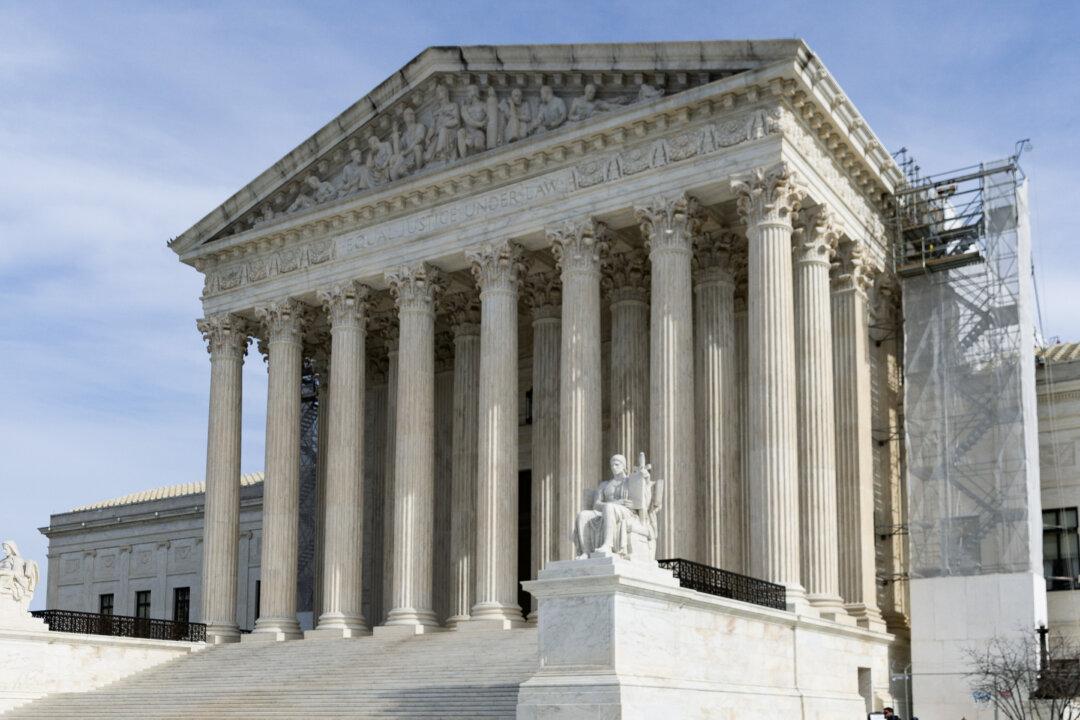In 2018, public-sector labor unions suffered what was seen at the time as a
crippling blow: The Supreme Court ruled that they could no longer require non-members to pay collective bargaining costs.
The
Janus v. AFSCME ruling, overturning some 40 years of precedent, was seen as a crowning victory for the forces behind state “right to work” laws barring unions from forcing workers to bear such costs as a condition of employment. Public-sector employees nationwide would now enjoy the same freedoms as their private-sector counterparts in the more than half of all states that had
enacted right-to-work measures, recently including Rust Belt labor strongholds Michigan and Wisconsin.
But four years later, Illinois, where
Janus originated, has bucked the Rust Belt right-to-work trend in a big way. In November, voters there passed a constitutional amendment expanding and entrenching the power of public unions, and protecting private ones. Coming a decade after voters in neighboring Michigan
defeated a similar such referendum, it’s a significant if overlooked development in this year’s midterm elections.
With its broad pro-union language, and constitutional weight, amendment
friends and
foes alike agree that no other state has enacted a measure like Illinois’. Its unique core provisions include making organizing and bargaining a “fundamental right”; allowing unions to negotiate over a theoretically limitless array of terms well beyond pay and hours; and prohibiting lawmakers from limiting union power.
Amendment 1 also
effectively rules out right-to-work protections for private-sector workers. In contrast, 10 states, including
Tennessee this year, have adopted right-to-work constitutional amendments.
Legal experts anticipate
litigation over the amendment, including on issues as fundamental as who and what it actually covers. The amendment protects “employees”—not specifically “public-sector employees”—implying it could govern their private sector counterparts. That’s an apparent conflict with federal labor law.
Amendment 1 also protects the rights of unions to bargain not just over customary terms like wages and benefits, but undefined matters of “economic welfare” and “safety at work” whose elasticity could be tested in court.
Finally, some also believe the amendment could spur a states’ rights challenge to Janus. Though its text does not call for public-sector unions to again charge mandatory fees of non-union members, the theory is that were a public-sector union to try and reinstitute such fees under Illinois’ constitution, it might be more likely to prevail than by relying on mere Illinois law, which Janus overruled.
Looming lawsuits notwithstanding, amendment supporters such as Greg Kelley, President of SEIU Healthcare Illinois,
hailed it as a victory for “working families over corporate interests.”
Marc Poulos, counsel for the campaign committee that pushed for the amendment’s passage,
said, “We want workers to look at Illinois as the number one place where they want to be a part of the workforce because they have the best protections that they can have in the country.”
New Burdens for Taxpayers
But opponents say Illinoisans will pay an outsized cost for those “protections” in a state where 13.9 percent of the workforce is unionized, putting it roughly four points above the national average. Nearly half of all state and local government workers—approximately 290,000 employees—are union members according to a recent
study, with K-12 teachers, police, and firefighters among the most heavily unionized. (Private sector union members make up less than 10 percent of the total private workforce.)
Some expect that Amendment 1 will saddle taxpayers with substantial new associated burdens driven by the expanded areas of collective bargaining it protects.
Critics see a preview of what’s to come in the powerful Chicago Teachers Union’s demands for rent abatement and defunding the police during the ostensibly health-focused labor disputes of the coronavirus pandemic. Then, the union’s demands went unmet. Chicago did cut $59 million from the police’s budget during the post-George Floyd unrest of 2020, but not in response to the CTU’s pleas specifically. But that the union pursued measures so far afield from education before, and “without any statutory authority,” the Manhattan Institute’s Daniel DiSalvo told RealClearInvestigations, is “indicative of … where some more militant unions want to go”—now with constitutional authority.
Michael J. Lotito, co-chair of labor at employment law firm Littler’s Workplace Policy Institute, told RealClearInvestigations that the amendment suggests the “scope of bargaining” will “encompass virtually anything.” Practically, he says, “contract negotiations are going to be more tedious, last longer, produce more grievances and arbitrations and increase taxpayer costs.”
The Illinois Policy Institute, in
arguing against the amendment, claimed that over a four-year period after its passage, the average family would face a property tax hike of
more than $2,100. Poulos
counters that there is “no data that would suggest that taxes would go up by virtue of th[e] amendment being passed.”
The Heritage Foundation’s Rachel Greszler points to an inherent conflict in public-sector organizing that the amendment may accentuate. She
notes that public-sector unions could “negotiate with the politicians who depend on their endorsements and campaign contributions” a slew of benefits from “10 percent annual wage increases” to “stipulations that make it even harder to get rid of derelict or destructive public employees.”
Lotito says this is “why FDR did not include public sector workers under the NLRA” (
National Labor Relations Act). With “more things to bargain about and then grieve,” he told RCI, “inevitably the power of public sector unions will increase.”
By extension, amendment critics say, the power of the people will wane. The Illinois Policy Institute’s Rebecca Susmarski argues that Amendment 1
threatens democracy by giving government union chiefs the ability to bargain “over policy issues that should be left up to the people and their lawmakers to decide”—citing demands like those raised previously by the Chicago Teachers Union.
What’s more, by constraining legislators’ ability to “interfere with, negate, or diminish the right of employees to organize and bargain collectively” over the myriad subjects covered by the provision, the think tank
suggests that unions could negotiate terms contrary to laws passed by the people’s representatives, thereby nullifying them. By the Illinois Policy Institute’s count, the amendment
threatens to void more than 350 such laws.
Illinois AFL-CIO head Tim Drea
contends that “we don’t have any nefarious plan to go in and take over the world with this amendment.” In the run-up to its passage, other amendment exponents similarly tended to downplay its significance, claiming the provision aimed more to reinforce the state’s union protections, given the wake-up call posed by the prior, less union-friendly Republican Governor Bruce Rauner—the original plaintiff in the Janus case—than to dramatically expand them.
Following its passage, Harold Meyerson of the progressive journal The American Prospect likened Amendment 1 to ballot measures passed by states already protecting abortion that similarly added constitutional protections to the practice during the 2022 midterms. Meyerson told RCI the amendment ought to be seen as “largely a prophylactic measure.” Joseph Slater, professor of labor and employment law at the University of Toledo, also told RCI he was “not convinced this is going to be such a big deal,” emphasizing the primacy of Janus and that Illinois faces no right-to-work push. DiSalvo says that whether Amendment 1 represents the status quo or a break from it will depend on how public-sector unions, their government counterparts, and then perhaps courts interpret its language covering additional grounds for collective bargaining.
Watching Pension Liabilities Grow
No matter how modest the ambitions of public-sector unions, if they use their potential newfound power to realize greater benefits, taxpayers in Illinois may face costs substantially higher than projected near-term property tax increases. Prior to the amendment’s passage, Illinois
reported unfunded public pension liabilities of $129.7 billion. That’s higher than the annual GDP of Puerto Rico.
The
American Legislative Exchange Council estimates Illinois’ unfunded public pension liabilities to be substantially higher at $533.7 billion, or $41,656 per person, based on what it believes to be more realistic assumptions. Regardless, by
several measures, the state’s obligations are among the nation’s
highest and have trended higher over time. Illinois’ credit ratings are, consequently, the
worst in the nation. ALEC chief economist Jonathan Williams
predicted in June—before the passage of Amendment 1—that absent “a constitutional change or a new interpretation by the Illinois Supreme Court, the only other option…[to cover Illinois’s public pensions would be] a federal bailout.”
Already, Illinoisans suffer from the
second highest property tax rate in the country. Those taxes are driven in large part by pensions that—as per Williams’ reference to “a new interpretation by the Illinois Supreme Court”—have expanded with the help of favorable rulings solicited by the state’s unions.
In a victory for public unions, Illinois’ Supreme Court had
previously ruled unconstitutional a 2014
pension reform law aimed at grappling with the state’s then-worst-funded retirement system in the country. The pensions kept growing. In fiscal year 2022,
more than 80 percent of Chicagoans’ property taxes went toward city employee pensions.
Greszler says that the high pension costs, in addition to driving higher taxes, are also forcing budget cuts, including for cops and firefighters. Big businesses such as Tyson, Boeing, and Citadel have recently
fled the state, some citing the rising crime and violence, particularly in Chicago.
Illinois’ business climate also
ranks poorly, a trend amendment critics believe will persist should the provision spur higher taxes, expenses, and litigation costs to remedy new labor disputes. Todd Maisch, president and CEO of the Illinois Chamber of Commerce, which opposed the amendment,
warned prior to its passage that it would make Illinois “an outlier in the Midwest for demonstrating that we are an anti-employer” state.
In the official argument for the amendment included on ballots, its champions countered that the provision would “help our economy by putting more money in workers’ pockets who join together and get raises. That will mean more money going into our communities and small businesses as people join the middle class with good-paying jobs”—a position advanced in a
study published by
amendment supporters.
Those communities have been shrinking, with citizens, like brand-name businesses, fleeing the state. Illinois’s population has
declined eight years in a row—its outmigration rate
linked in surveys to high tax rates. The state’s tax base is therefore
shrinking at the very time the strain on it may be about to grow.
Despite these concerns, Illinoisans voted “Yes” on Amendment 1.
David Madland, Senior Fellow at the Center for American Progress, told RCI that he sees Amendment 1 as reflecting “the latest example of voters favoring pro-union policy.” He cites as others Ohio’s passage of a 2011 initiative overturning legislation restricting collective bargaining for public sector workers, and Missouri’s 2018 overturning of the state’s right-to-work law by a nearly 2-to-1 margin.
Meyerson sees the existence of Amendment 1 as “the product of unions’ fears” and its success as “the product of unions’ popularity.”
The public perception of unions has improved dramatically in recent years, with approval ratings rebounding from an all-time low of 48 percent in 2009, to 71 percent per Gallup’s latest August 2022 survey—a figure last seen in 1965.
Will Amendment 1’s success spark a wave of similar constitutional amendments elsewhere?
The progressive Economic Policy Institute’s Jennifer Sherer thinks so. She told RCI that “Illinois’ amendment could inspire workers in other states to start the longer process of pursuing similar constitutional amendments.” Sherer cited Virginia, Nevada, Maryland, and Colorado as other states to recently “extend collective bargaining rights that groups of public sector workers previously lacked,” anticipating additional “legislation … to shore up workers’ rights within the next year.”
Amendment critics like the
Wall Street Journal editorial board too predict that solidly Democrat states such as California, Washington, and New York could follow in Illinois’ footsteps.
For his part, before Amendment 1 passed, Illinois AFL-CIO chief Drea
said that “we’re getting a lot of interest on this amendment from other states.”
If nothing else, DiSalvo told RCI that should Amendment 1’s provisions be interpreted liberally, it could “provide a model for what people might want to do elsewhere.” As with the Chicago Teachers Union, teachers’ unions across the country had already in recent years been
demanding policies from “Medicaid for all” to wealth taxes, without the legal cover of an Amendment 1. DiSalvo says he could envision future efforts being marketed under the banner of “reimagining collective bargaining.”
Such efforts would come amid a time of conflicting signals about the status of the labor movement in America.
By some measures union activity
has been surging. The National Labor Relations Board saw a 53 percent increase in petitions this year, the highest number of petitions filed since 2016. Unfair labor practice charges filed with the NLRB also increased 19 percent. Between the two measures, total cases brought to the NLRB increased by the single largest number since 1976, and by percentage since 1959.
Meanwhile, organizers in the private sector have mounted unionization efforts among Apple store “geniuses,” Amazon warehouse workers, and Starbucks baristas. Perceived momentum in the labor movement may be influenced in part by a media that, as RealClearInvestigations’ James Varney has
reported, has itself been increasingly unionizing—often covering unionization efforts in other industries favorably. Additional union growth can be seen in
adjacent areas, from
universities to the
U.S. Capitol. These developments come against the backdrop of a Biden administration that, notwithstanding its recent push to impose a rail contract on unions and block a nationwide strike, has been
seen by progressives as one of the most pro-labor in American history.
Membership’s All-Time Low
Still, America’s overall union membership rate sits at an all-time low, since the
Department of Labor kept comparable data, of 10.3 percent. Whereas in 2021 there were 14.0 million union workers, in 1983, the there were 17.7 million such workers, for a membership rate of nearly double that seen today—20.1 percent. Major work stoppages, after dramatically increasing in 2018 and 2019,
fell just as dramatically during the coronavirus pandemic.
The fact that conservative-leaning Tennessee this year enshrined a right to work in its constitution—one already protected by state law dating back to 1947—suggests such efforts may simply be tracking with increased political
polarization.
In Illinois, litigation over Amendment 1 began before it even passed, with opponents unsuccessfully seeking to get the referendum removed from the ballot on grounds that it violated the U.S. Constitution’s Supremacy Clause by creating a state-law right to private sector collective bargaining already governed by federal law, the NLRA, and that unconstitutional proposals may not go before the voters.
The effort failed, though Illinois’ judiciary did not rule on the amendment’s constitutionality.
The Illinois Policy Institute and Liberty Justice Center represented the plaintiffs in that case—the first such case on which they had partnered since Janus v. AFSCME.
In the wake of that setback, the latter’s president, attorney Jacob Huebert, vowed: “We remain confident in our legal arguments and will continue to represent Illinois taxpayers’ interests against this illegal amendment.”





